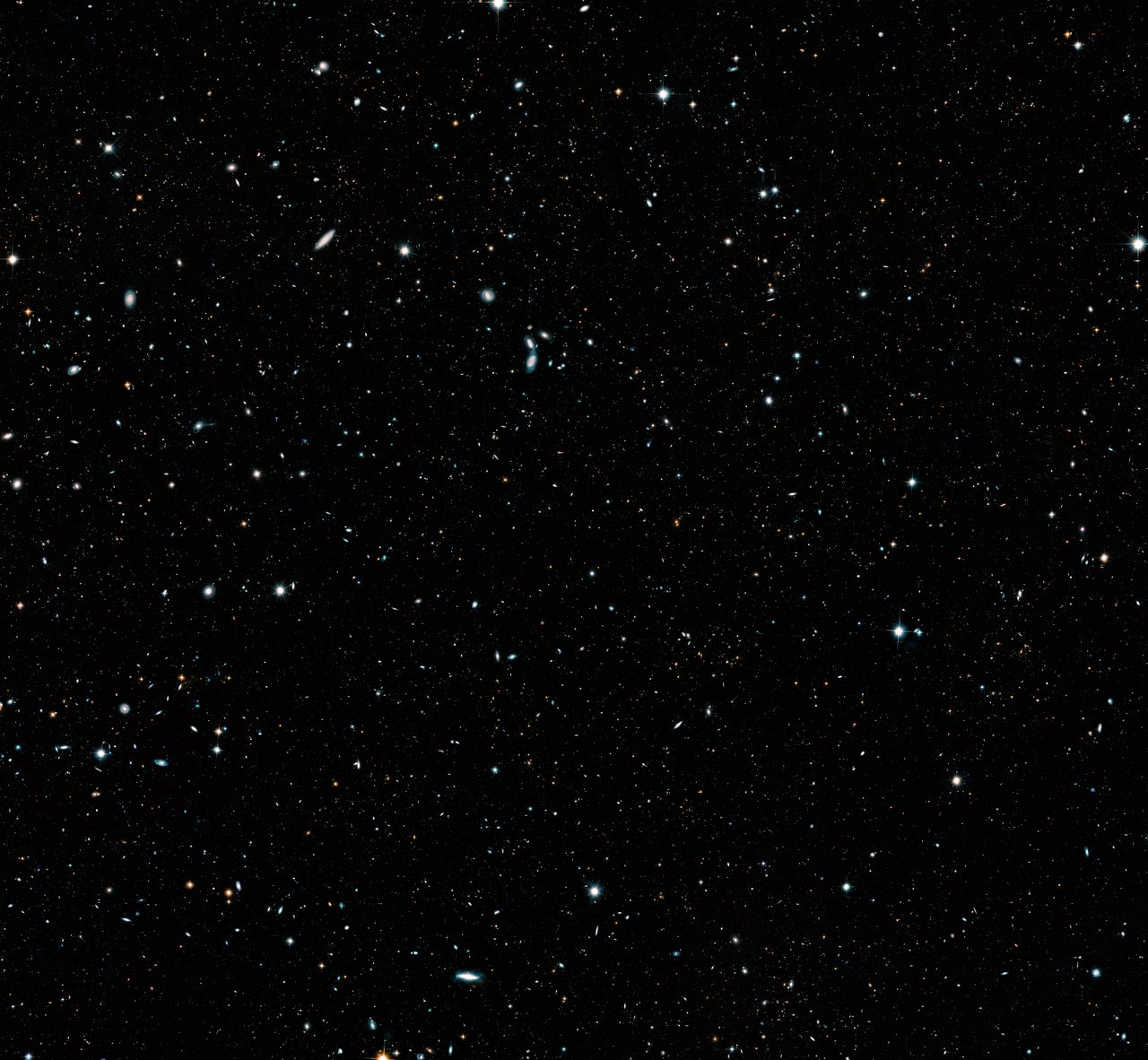Legacy Field Image of the Distant Universe Assembled by Hubble along with DAWN Associates.

16 years of observations, from the NASA/ESA Hubble Space Telescope, has enabled astronomers to assemble a mosaic of the distant Universe, among who are Dr. Kate Whitaker and Dr. Pascal Oesch, both DAWN Associates. The image, which is called the Hubble Legacy Field, contains approximately 265,000 galaxies that stretch back 13.2 billion years, to when the Universe was just 500 million years old.
The wavelength range of the Hubble Legacy Field stretches from ultraviolet to near-infrared light, capturing all features of galaxy assembly over time. The faintest and farthest galaxies in the image are just one ten-billionth the brightness of what the human eye can see.
Before Hubble was launched in 1990, astronomers were only able to see galaxies up to about seven billion light-years away, but observations with ground-based telescopes are not able to establish how galaxies are formed and evolved in the early Universe. With the Hubble deep surveys, it is possible to reveal the emergence of structure in the infant Universe and the subsequent dynamic stages of galaxy evolution. These deep-field views of galaxies help astronomers trace the expansion of the Universe, which further develops our understanding of the underlying physics of the cosmos. Galaxies also show when the chemical elements originated and enabled the conditions that ultimately led to the emergence of life.
However, this new set of Hubble images, comprising the collective work of 31 Hubble programs by different teams of astronomers, is only the first in a series of Hubble Legacy Field images. In total, Hubble has spent more than 250 days on this small area, which is the longest time that has ever been spent on any region of the sky. The team of astronomers is working on a second set of images, totaling more than 5,200 Hubble exposures.
In the team that has contributed to the Hubble Legacy Field are Dr. Katherine Whitaker of the University of Connecticut and Dr. Pascal Oesch of University of Geneva, who are both Associates of our Cosmic Dawn Center, and therefore a part of our international DAWN family. We are proud of their hard work and contributions!
It is the first time that astronomers have gone this far and harvested so many more distant galaxies than in previous surveys, which means that this image has surpassed all other images so far, and will continue to do so until The James Webb Space Telescope (JWST) is launched.
The upcoming NASA/ESA JWST will allow astronomers to push much deeper into the legacy field, and will essentially enable them to reveal how the infant galaxies have developed over time.
Hubble press release: https://www.spacetelescope.org/news/heic1909/
